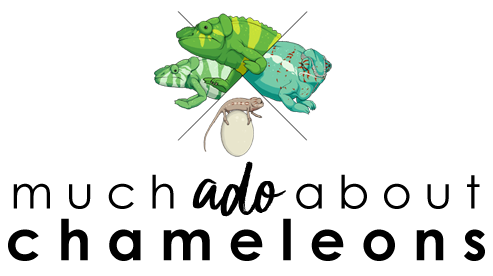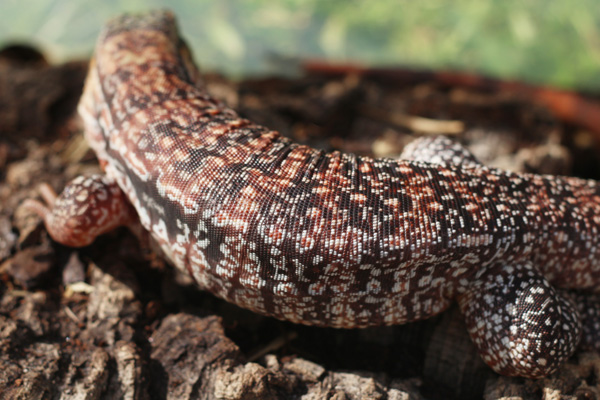This is perhaps more of an opinion blog than a strictly educational one, but nonetheless, I believe it should at least inspire some people to take learning about anything into their own hands.
I used to spend my weekends and some weekdays talking to customers, both in person and over the phone, about their current pets, what supplies they needed, which ones they didn't, and recommending how to care for a new pet reptile if they chose to take one home. Because of my education and background with these animals, it became apparent to most customers that they could trust my recommendations. I would tell them which supplies they needed for a new pet, which ones were a waste of money, and why each one mattered so they could understand why they needed what they were getting. Often, previous customers would purposely come back during my work hours to talk to me, specifically.
Now, on the flip side of this was one of my co-workers. He had previously made his money working as a used car salesman, and was hired at the store in an hour of need for his experience in selling, but this man had never owned more than a single snake that he had inherited from a friend. He did not understand any of the supplements, did not know there was a difference between UVA or UVB, did not care to send an animal home with a 150w basking bulb that would eventually cook it, his bottom line was just to sell. Once I started working there I found myself correcting his fatally incorrect information continuously, such as not giving chameleons calcium with vitamin D3 in it every day, as he was recommending, or not putting several males of a species together because they would eventually fight each other to the death. Frankly, he was possibly one of the worst qualified people I have ever come across working in anything related to animals. But he was good at faking confidence in his information, so he sounded believable.
I say all this to underline the importance of knowing where your information comes from. Do not trust just one opinion, do your own research and look into multiple sources of information to form the most thorough opinion you can!
Imagine being a customer that has no previous knowledge of how to care for a gecko and you end up speaking to one of us. If it were me, having kept geckos before, I would be capable of giving you accurate information to keep a gecko successfully for years. But if it were him, you may leave with poor information, inappropriate supplies, and not know any better because he seemed competent.
This is often the case with 90% of all pet stores across the nation, who hire people who are hard working or good at sales but have little or no knowledge about the animals they are selling. Every so often you are lucky to find someone who keeps/breeds animals personally and can help, or you run across a person who is in college learning about the animals they sell (like another coworker who was a marine biology student selling fish, and was because of it super competent and reliable). But most of the time they are simply people who were hired to fill a position, regardless of whether they have experience or not.
So when you approach the subject of looking into a new pet, or want to learn more about how to care for a pet you already have, research research research!
Never look at just one source (even this blog), look at lots of different blogs, websites, books, and forums. Read all the different opinions you can, research the ones that confuse you, and use a little common sense to determine which opinions you can trust and which ones are incorrect. Because there are many ways of keeping these animals successfully, and not all of them may work for you and your situation. So read, research, and read some more. Talk to breeders, find experts at reptile shows, and email professionals in the hobby. But do not rely on a single source to give you the most complete and accurate information.
So don't get stuck caring for a pet the way a salesman wants you to think you have to, do your own research and save yourself money, effort, and heartache.
3
I used to spend my weekends and some weekdays talking to customers, both in person and over the phone, about their current pets, what supplies they needed, which ones they didn't, and recommending how to care for a new pet reptile if they chose to take one home. Because of my education and background with these animals, it became apparent to most customers that they could trust my recommendations. I would tell them which supplies they needed for a new pet, which ones were a waste of money, and why each one mattered so they could understand why they needed what they were getting. Often, previous customers would purposely come back during my work hours to talk to me, specifically.
Now, on the flip side of this was one of my co-workers. He had previously made his money working as a used car salesman, and was hired at the store in an hour of need for his experience in selling, but this man had never owned more than a single snake that he had inherited from a friend. He did not understand any of the supplements, did not know there was a difference between UVA or UVB, did not care to send an animal home with a 150w basking bulb that would eventually cook it, his bottom line was just to sell. Once I started working there I found myself correcting his fatally incorrect information continuously, such as not giving chameleons calcium with vitamin D3 in it every day, as he was recommending, or not putting several males of a species together because they would eventually fight each other to the death. Frankly, he was possibly one of the worst qualified people I have ever come across working in anything related to animals. But he was good at faking confidence in his information, so he sounded believable.
I say all this to underline the importance of knowing where your information comes from. Do not trust just one opinion, do your own research and look into multiple sources of information to form the most thorough opinion you can!
Imagine being a customer that has no previous knowledge of how to care for a gecko and you end up speaking to one of us. If it were me, having kept geckos before, I would be capable of giving you accurate information to keep a gecko successfully for years. But if it were him, you may leave with poor information, inappropriate supplies, and not know any better because he seemed competent.
This is often the case with 90% of all pet stores across the nation, who hire people who are hard working or good at sales but have little or no knowledge about the animals they are selling. Every so often you are lucky to find someone who keeps/breeds animals personally and can help, or you run across a person who is in college learning about the animals they sell (like another coworker who was a marine biology student selling fish, and was because of it super competent and reliable). But most of the time they are simply people who were hired to fill a position, regardless of whether they have experience or not.
So when you approach the subject of looking into a new pet, or want to learn more about how to care for a pet you already have, research research research!
Never look at just one source (even this blog), look at lots of different blogs, websites, books, and forums. Read all the different opinions you can, research the ones that confuse you, and use a little common sense to determine which opinions you can trust and which ones are incorrect. Because there are many ways of keeping these animals successfully, and not all of them may work for you and your situation. So read, research, and read some more. Talk to breeders, find experts at reptile shows, and email professionals in the hobby. But do not rely on a single source to give you the most complete and accurate information.
So don't get stuck caring for a pet the way a salesman wants you to think you have to, do your own research and save yourself money, effort, and heartache.






















































